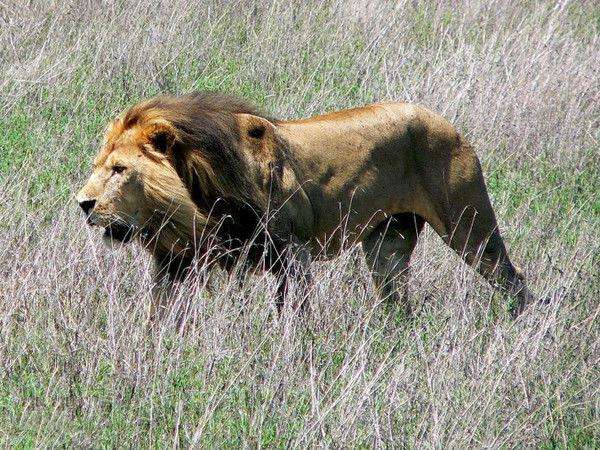Panthera leo melanochaitus
IUCN
LCBasic Information
Scientific classification
- name:Panthera leo melanochaitus
- Scientific Name:Panthera leo melanochaitus,Cape Lion, Cape Lion, Cape Town Lion
- Outline:Carnivora
- Family:Schizopoda Felidae Panthera
Vital signs
- length:About 2.5 meters
- Weight:110-300kg
- lifetime:No verification information
Feature
The lion once lived at the southernmost tip of the Earth
Distribution and Habitat
The Cape of Good Hope lion is mainly distributed in the Cape Province, the capital of South Africa, and the surrounding areas. It was once very common in the suburbs of Cape Town.
Appearance
The skull is oval, the snout is short, and the ears are quite black and long. The sideburns are very developed, but slightly shorter than those of the Barbary lion, and are brown-yellow.
Next to a surviving Cape lion skeleton, there is a giant African buffalo skeleton (scientists estimated the weight to be 184kg based on the skeleton). There are obvious scratches on the skeleton, which experts determined to be caused by the Cape lion, which shows that the survival ability of the Cape lion is worse than that of other lion subspecies. The lion is second only to the tiger in size among all cats. The estimated data is that the male is 2.5 meters long and the tail is 1 meter long, and the female is 2.4 meters long and the tail is 90cm long. The running speed of males is 35km/h, and that of females is 38km/h. The shoulder height of males is 90cm based on the skeleton specimens, and that of females is 75cm.
Some people have always compared the Cape lion and the Barbary lion on the issue
Details
The Cape lion (scientific name: Panthera leo melanochaitus), also known as the Cape lion, is a species of lion that lived in the southernmost tip of Africa and is now extinct.

Many people think that the Cape lion is a subspecies of lion, but in fact, the Cape lion is not a subspecies of lion. According to the latest lion classification method, the modern lion family is divided into two major branches, the southern and northern branches. The Cape lion belongs to the South African subbranch of the southern branch, and there is not much difference in genes with the existing South African Kruger lion and Kalahari lion. The Cape lion was considered an independent lion subspecies in the past, but according to the latest gene sequencing research, the Cape lion is a kind of South African lion.
The Cape lion was completely extinct, so people know very little about this lion. They can only find clues from the few specimens of Cape lions left in museums. In terms of morphological characteristics, there is not much difference between the Cape lion and the existing South African lion, but the mane of the Cape lion seems to be more developed than that of the existing South African lion. Although not as developed as the Barbary lion in North Africa, it can be seen that many Cape lions also have manes on their abdomens. The manes of the existing African lions rarely extend to the belly. The famous East African lion king Kalamas is famous for the mane on his belly. In addition, as a type of South African lion, the Cape lion does not differ much from the other existing South African lions in terms of morphological characteristics.
For today's wild lions, human hunting has always been a major reason for their sharp decline in numbers. To this day, there are still many private hunting sites in Africa. As long as you spend a lot of money, you can hunt ferocious lions. Only when humans establish the awareness of protecting lions, lions, beautiful and ferocious big cats, will not disappear from the earth.
Protect wild animals and eliminate game.
Maintaining ecological balance is everyone's responsibility!








